How to Build a Growth-Driven Service Innovation Portfolio
A balanced mix of sustaining, adjacent, and transformational innovations is essential for long-term success in B2B manufacturing, but many companies...
6 min read
Jan van Veen
May 7, 2020 8:47:00 PM

Many service innovations fail because they do not have a substantial and desired impact for clients. Often, customer insights and value propositions are limited to a description of features and benefits, without considering the outcomes clients desire.
The best practice is to have a compelling customer story and vision as a starting point. This customer story illustrates the challenges, common mistakes and best ways clients should solve these mistakes. Based on this insight, you can develop irresistible new advances services and compelling marketing and sales messages, even if you have limited resources.
Do you still see that many ideas and new advanced services do not hit the nail on the head?
The good news is: You are not alone.
In this article, I describe 7 practical steps to build a compelling customer story. These are the best practices applied by leading manufacturers to successfully develop and commercialise irresistible advanced services.
Your clients do not recognise which of their essential problems you are solving or how your services are offering a better solution. They do not see the positive impact they will get from your offerings.
And often, this problem is a bigger game than just higher uptime of equipment.
You and your colleagues already have most information at hand. It is a matter of turning this information and knowledge into a compelling customer story, for irresistible advanced services.
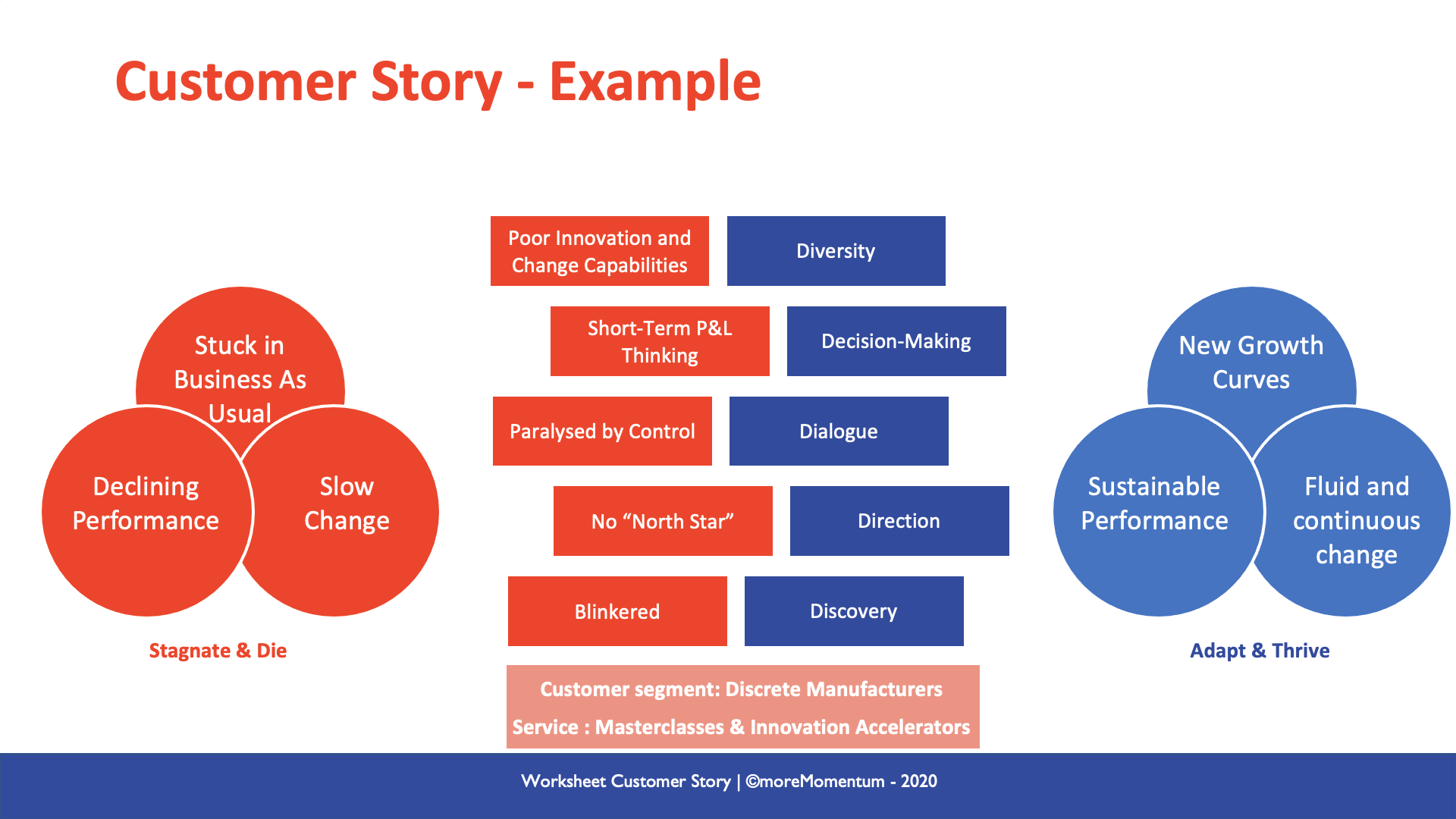
Note: problems can be about threats and risk to overcome as well as limitations to pursue new opportunities.
For every customer segment, you should be able to describe the bigger picture:
You can use this customer story in many ways:
This customer story is all about your clients, not your company, products and services.
I have done quite a few workshops and masterclasses to develop a customer story. In the beginning of these workshops, pretty much every team struggles to focus on the customer.
The pitfall is to be stuck in:
Although these insights are useful for many improvement processes and initiatives, they do not contribute to developing and commercialising irresistible advanced services.
On the contrary, these insights increase biases and keep your innovations being stuck in business-as-usual.
The following 7 steps take you through each element of the customer story.
Ideally, you form a small team to work on the 7 steps.
A customer insight or story should always be specific for a group of clients with the same characteristics that are relevant to the same challenges and needs they have.
This could be a particular customer segment or your ideal client.
At first, it can be challenging to define the specific customer segment. This is not a problem. In that case, just move on to the next steps. In step 3 and 4, you will notice that a lot of the customer problems are not relevant to all clients and how you could segment your clients into a few groups. By then, you can jump back to step 1 and iterate.
Having this customer segment in mind, start listing all the business problems you know or think they encounter or will encounter. If you do not have a clear definition and choice of a customer segment yet, just start with 1 or 2 relevant clients in mind.
The objective is to build a long list of problems, at least 100. Use the following tactics to keep the flow of new problems going and to ensure you have a broad and open perspective;
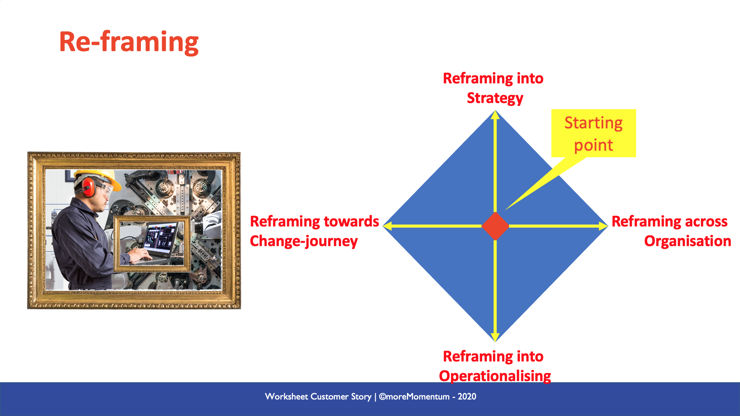
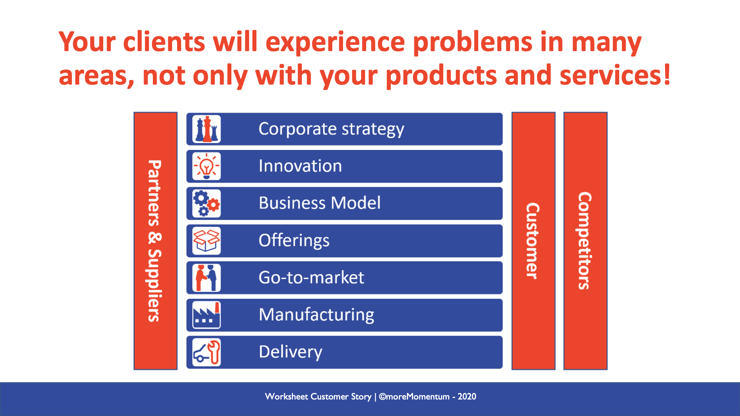
Now start grouping all similar or related problems. You can do this in a spreadsheet. If you are doing this in a workshop with several people, you may want to work with post-it notes.
You will probably see that there are different ways of clustering. That is perfectly fine. See what makes the most sense.
Now, it is also an excellent time to evaluate if the customer segment you chose, still makes sense. Or, in case you did not select a particular segment, see if you can recognise some sort of segmentation. If so, you can iterate the process so far and start with step 1 again.
7 to 10 problems is a lot to memorise and to help to build and communicate a clear message. The magical number is 3. 4 is okay too. If you have more than 4, you will notice that colleagues and clients will not memorise all of them after a conversation.
So, the next step is to further reduce the main problems into 3 or 4 dominant problems.
Summarise these 3-4 dominant problems into one single ultimate fear, like “adapt or die” or “hard work for less financial results, with no perspective for better times”.
Next step is to identify the 3-7 common mistakes you see your clients make that prevent them from solving the 3-4 dominant problems. These common mistakes are “wrong” thinking, actions and practices of your clients.
For example, if one of the dominant problems is “too high operational cost”, one of the common mistakes related to this dominant problem could be that your clients have a “lack of understanding of their cost drivers and cost structure”.
You may find some inspiration in the list of 100+ customer problems you identified in step 1.
Now define your vision of how your clients should solve each of the 3-7 common mistakes. This is not about your solution or offering yet; you will cover that in one of the next steps.
Finally, describe the 3-4 key benefits and the ultimate outcome for your clients if they address the 3-7 common mistakes and apply the 3-7 customer solutions you have specified.
The 3-4 benefits are the opposite of the 3-4 dominant problems, maybe structured slightly different. And the ultimate outcome is the opposite of the ultimate fear.
At this point, you already have a tremendously valuable insight, just using the information and knowledge you already have.
Next steps to make this insight and your customer story rock-solid, are:
Now you have a robust and in-depth insight into your clients’ needs for today and the future which offers you an “unfair” competitive advantage. You can now:
Read more about Service Innovation in our
Ultimate Guide for Service Innovation
You are sitting on gold.
You and your colleagues already have a massive amount of information and knowledge about your clients. You can turn that into actionable and compelling customer insights and a customer story to boost;
You can build a substantial competitive advantage, even if you do not have the budget and resources for intensive customer and market research.
All this requires is to;
Be open to new perspectives
It is not about convincing your clients of the value of your services, but about letting them convince you what they need.
Which 3 common mistakes do you make when developing and using customer insights for service innovation?
Subscribe for the our Impulse Letter
With regular updates about service news, trends and best practices.
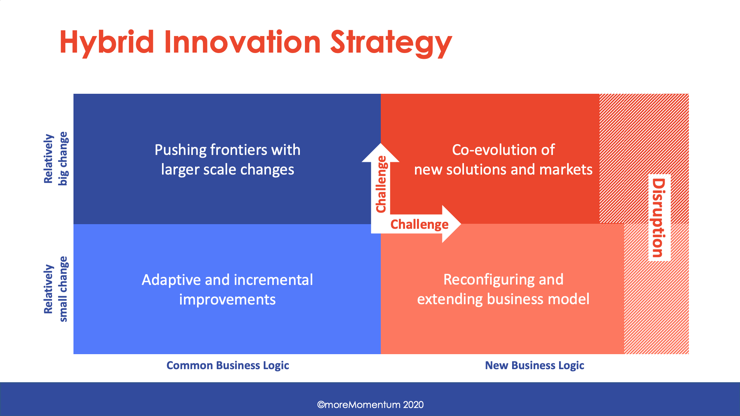
A balanced mix of sustaining, adjacent, and transformational innovations is essential for long-term success in B2B manufacturing, but many companies...

Launching new advanced services is innovating your business model. This requires internal momentum to monetise these services and data-driven...
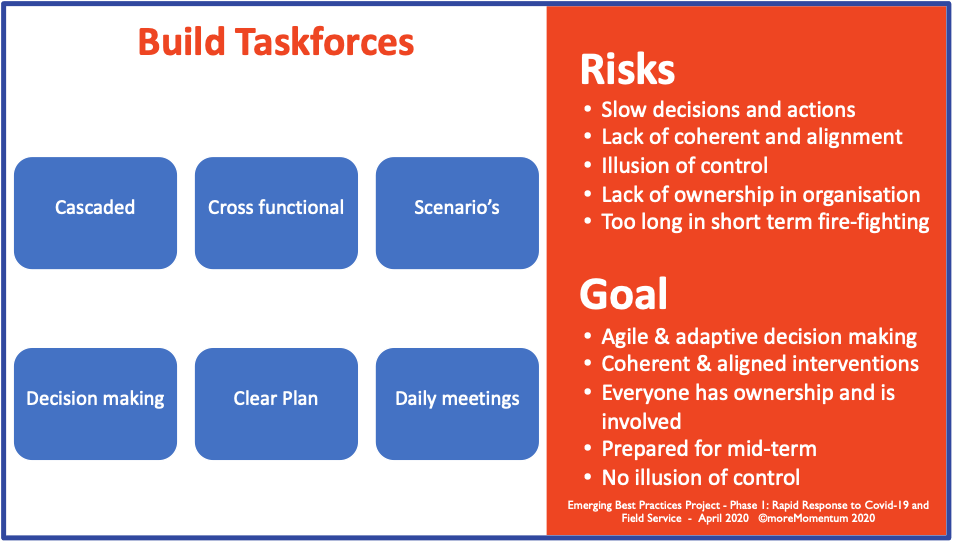
In a crisis like the COVID-19 outbreak, and especially during Phase 1 – Rapid Response, the speed and criticality of developments and decisions to be...